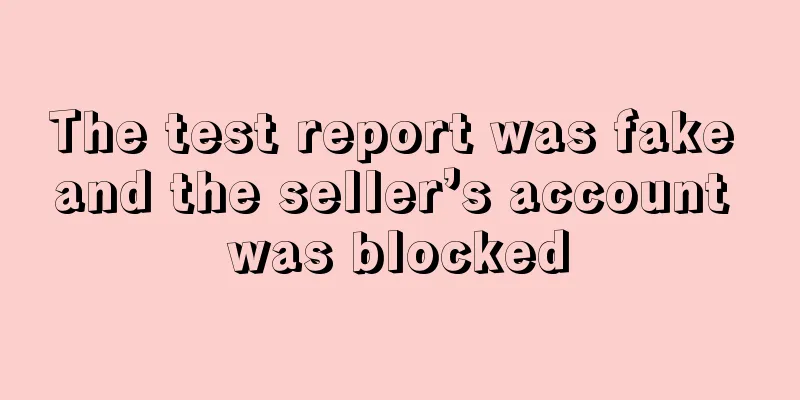The test report was fake and the seller’s account was blocked

|
Everyone who works for Amazon knows that many products require professional test reports to pass the review, because it is not uncommon for products to be recalled due to non-compliance with standards. However, the third-party testing community is also mixed, and if the report is fake, the consequences may be irreversible.
An insider broke the news to the editor that a seller’s account was recently blocked because of this:
The seller entered Amazon in 2019 and sold small appliances, mainly electric stew pots. At that time, the requirements for listing were not very high and the test reports were not very formal. However, recently, Amazon required a quality report for the product, so the seller found the whistleblower (a third party who did the testing).
The whistleblower's offer was a bit high, and the seller finally agreed after much hesitation, and sent a sample for structural inspection. After preliminary testing, this electric stew pot did not meet safety standards . At this time, it was discovered that there was still room for recovery if it was handled in time, but the seller encountered another third party.
The third party, relying on its early success stories on Amazon, assured the seller that the problem could be solved for a few thousand dollars. With all the sweet talk and especially the lure of price, the seller naturally chose to believe it.
Then the seller got the report and uploaded it to the backend, but within a few days, the test report was found to have problems. Because of the safety risks and good sales, the seller received the bad news that his account was blocked and his funds were frozen. Later, he found out that the content of the report was completely irrelevant. He was greedy for a short-term bargain, but the price he paid was that his entire store was blocked ...
According to the whistleblower, a regular test report usually takes 20-25 days, while a fake one can be done in as little as three days. If you compare the real and fake reports together, you can see how perfunctory they are.
The real test report has very detailed contents, involving dozens of test items, while the fake one has only a few lines, and the test items are only a few categories of appearance, and there is not even a list of components. Not only that, even the few items on it are all fabricated.
Moreover, the whistleblower also revealed that many people come to ask about the price every day, but they still choose small companies in the end. The reason for this is either because they are greedy for small profits or they are hoping for luck.
Money that shouldn't be saved is worth spending. Sellers should also take this as a warning and never have any bad thoughts on the test report. No matter what category you are in, product quality should be put first. You should be responsible for the product and even more so for the consumers. High standards are a supervision rather than a constraint for sellers. Detection Fake E-commerce |
<<: TikTok releases platform advertising effectiveness test results
>>: Amazon updates product types and attributes, some of which have been enabled!
Recommend
What is kicksta? kicksta Review, Features
This tool is mainly used to increase followers by...
Involving child safety! Amazon recalls children's products again
Recently, the Canadian Ministry of Health said th...
Shopify launches service for selling NFT products!
Recently, Shopify President Harley Finkelstein an...
What is the Amazon 2.14 incident? Amazon 2.14 incident Review, Features
The Amazon 2.14 incident refers to the fact that ...
Net profit of 400 million, made a fortune from the huge sales in this fertile land!
The online shopping craze triggered by the epidem...
Shopify expands rapidly in Asia Pacific, with Australia's GMV soaring 118%!
Shopify, an independent website building platform...
Revenue explodes against the trend! Shenzhen Dama finds new growth path
If someone says that a product requires a large i...
Inspection rate increased! Customs strictly checks British agents, some sellers' goods were detained
The policy environment for the cross-border e-com...
What is Artsy? Artsy Review, Features
Artsy is a leading international art trading platf...
U.S. Customs seizes Xinjiang cotton clothing, and many freight forwarders require textile sellers to provide "certificates of origin"
Recently, some freight forwarders stated that the...
What is Easy Review Professional Review? Easy Review Professional Review Review, Features
Yisuping professional evaluation recommends the p...
Canada's beauty industry rebounds, with hair care topping the list
It is reported that due to the country's lock...
What is Business Report? Business Report Review, Features
Business Report is a store data statistics automa...
Shenzhen Dama wins the game! Wins another lawsuit
The litigation dispute between Xinghui Co., Ltd. ...
Etsy requires sellers to provide advance delivery information!
Recently, Etsy issued an announcement requiring s...









